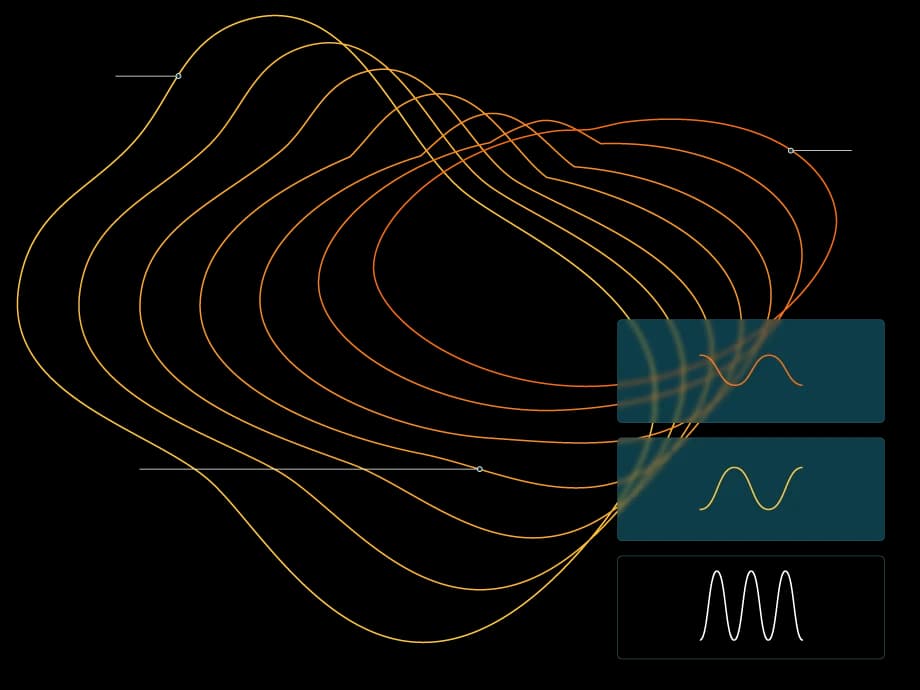Expanding accuracy through innovation
At Speechmatics, self-supervised learning (SSL) serves as a transformative approach in training speech models, harnessing unlabeled data to enhance our speech recognition systems.
This technique allows us to autonomously identify patterns in vast amounts of data, significantly expanding the diversity of speech variations our models can learn from and improving accuracy across multiple languages.
Tirelessly pushing speech technology forward...
Throughout the years, Speechmatics has remained at the forefront of speech recognition research and innovation. We are consistently pushing the boundaries of what's possible in speech-to-text technology.
Our published research
Bias-Augmented Consistency Training Reduces Biased Reasoning in Chain-of-Thought
Bias-Augmented Consistency Training Reduces Biased Reasoning in Chain-of-Thought
James Chua, Edward Rees, Hunar Batra, Samuel R. Bowman, Julian Michael, Ethan Perez, Miles Turpin. March 8, 2024.
Debating with More Persuasive LLMs Leads to More Truthful Answers
Debating with More Persuasive LLMs Leads to More Truthful Answers
Akbir Khan, John Hughes, Dan Valentine, Laura Ruis, Kshitij Sachan, Ansh Radhakrishnan, Edward Grefenstette, Samuel R. Bowman, Tim Rocktäschel, Ethan Perez. February 9, 2024.
Hierarchical Quantized Autoencoders
Hierarchical Quantized Autoencoders
Will Williams, Sam Ringer, Tom Ash, John Hughes, David MacLeod, Jamie Dougherty. February 19, 2020.
Texture Bias Of CNNs Limits Few-Shot Classification Performance
Texture Bias Of CNNs Limits Few-Shot Classification Performance
Sam Ringer, Will Williams, Tom Ash, Remi Francis, David MacLeod. October 18, 2019.
Discriminative training of RNNLMs with the average word error criterion
Discriminative training of RNNLMs with the average word error criterion
Remi Francis, Tom Ash, Will Williams. November 8, 2020.
The Speechmatics Parallel Corpus Filtering System for WMT18
The Speechmatics Parallel Corpus Filtering System for WMT18
Tom Ash, Remi Francis, Will Williams. Machine Translation (WMT) October 31 – November 1, 2018.
A Framework for Speech Recognition Benchmarking
A Framework for Speech Recognition Benchmarking
Franck Dernoncourt, Trung Bui, Walter Chang. Adobe Research. Interspeech 2018
Scaling Recurrent Neural Network Language Models
Scaling Recurrent Neural Network Language Models
W. Williams, N. Prasad, D. Mrva, T. Ash, A.J. Robinson. ICASSP 2015. February 2, 2015.
One billion word benchmark for measuring progress in statistical language modeling
One billion word benchmark for measuring progress in statistical language modeling
C. Chelba, T. Mikolov, M. Schuster, Q. Ge, T. Brants, P. Koehn, A.J. Robinson. Interspeech 2014. December 10, 2013.
Connectionist Speech Recognition of Broadcast News
Connectionist Speech Recognition of Broadcast News
A. J. Robinson, G. D. Cook, D. P. W. Ellis, E. Fosler-Lussier, S. J. Renals, and D. A. G. Williams. Speech Communication, 37(1), 2002.
Recognition, indexing and retrieval of British broadcast news with the THISL system
Recognition, indexing and retrieval of British broadcast news with the THISL system
A.J. Robinson, D. Abberley, D. Kirby, and S. Renals. Proceedings of the European Conference on Speech Technology. volume 3, pages 1267–1270, September 1999.
Time-First Search for Large Vocabulary Speech Recognition
Time-First Search for Large Vocabulary Speech Recognition
A.J. Robinson and J. Christie. ICASSP, pages 829–832, 1998.
Forward-Backward Retraining of Recurrent Neural Networks
Forward-Backward Retraining of Recurrent Neural Networks
A. Senior and A.J. Robinson. Advances in Neural Information Processing Systems 8, 1996.
The Use of Recurrent Networks in Continuous Speech Recognition
The Use of Recurrent Networks in Continuous Speech Recognition
A.J. Robinson. Automatic Speech and Speaker Recognition: Advanced Topics, chapter 10.
The Application of Recurrent Nets to Phone Probability Estimation
The Application of Recurrent Nets to Phone Probability Estimation
IEEE Transactions on Neural Networks, 5(2), March 1994. A.J. Robinson.
A Recurrent Error Propagation Network Speech Recognition System
A Recurrent Error Propagation Network Speech Recognition System
A.J. Robinson and F. Fallside. Computer Speech and Language, 5(3):259–274, July 1991.
Dynamic Error Propagation Networks
Dynamic Error Propagation Networks
A. J. Robinson. PhD thesis, Cambridge University Engineering Department, February 1989.
Technical spotlight
Sparse All-Reduce in PyTorch
The All-Reduce collective is ubiquitous in distributed training, but is currently not supported for sparse CUDA tensors in PyTorch.
In the first part of this blog we contrast the existing alternatives available in the Gloo/NCCL backends.
The.Shed: Speechmatics Capabilities in real-time
Imagine being able to understand and interpret spoken language not only retrospectively, but as it happens. This isn't just a pipe dream — it's a reality we're crafting at Speechmatics.
Our mission is to deliver Speech Intelligence for the AI era, leveraging foundational speech technology and cutting-edge AI.
An Almost Pointless Exercise in GPU Optimization
Not everyone is able to write funky fused operators to make ML models run faster on GPUs using clever quantization tricks. However lots of developers work with algorithms that feel like they should be able to leverage the thousands of cores in a GPU to run faster than using the dozens of cores on a server CPU.
To see what is possible and what is involved, I revisited the first problem I ever considered trying to accelerate with a GPU.

